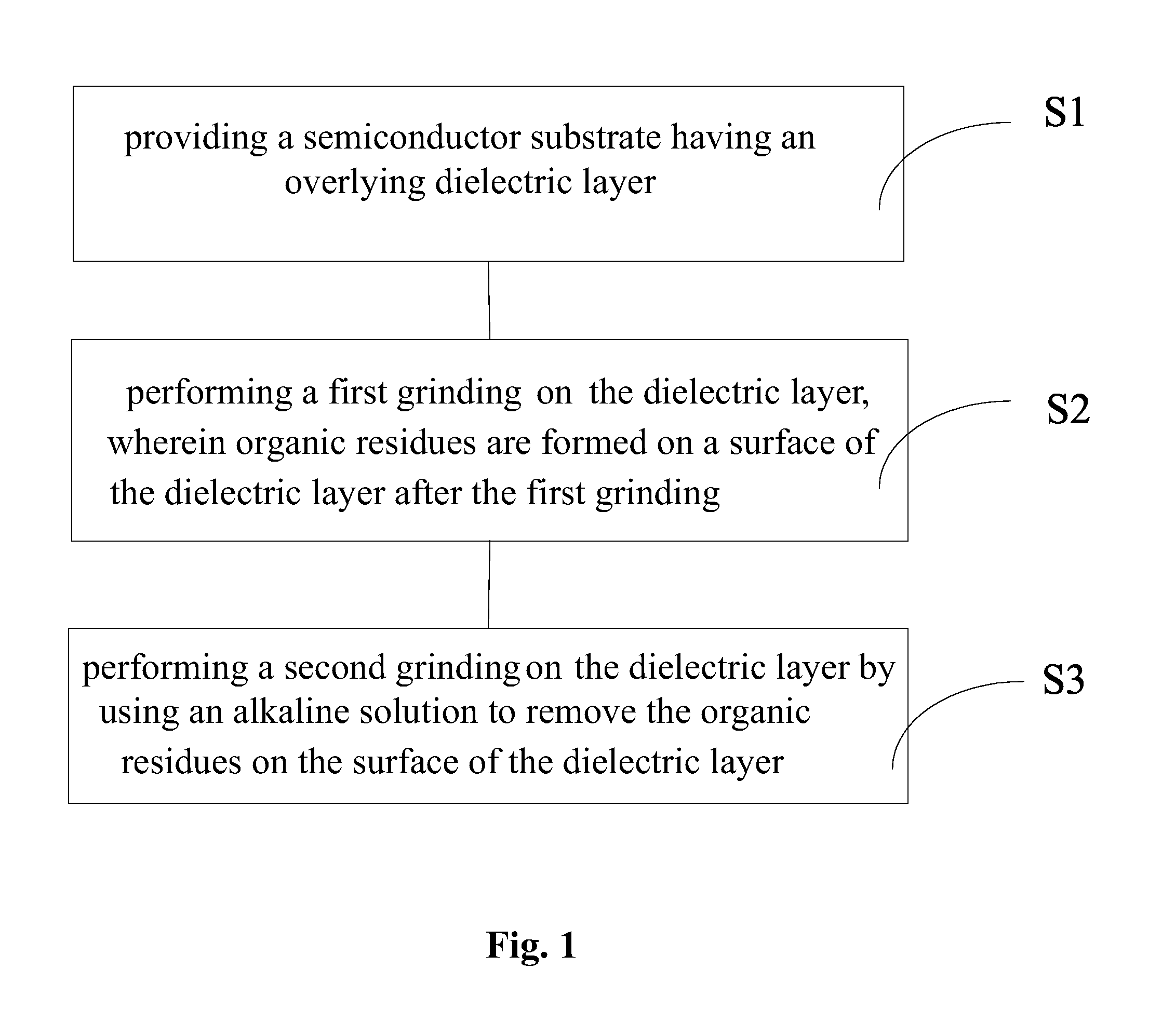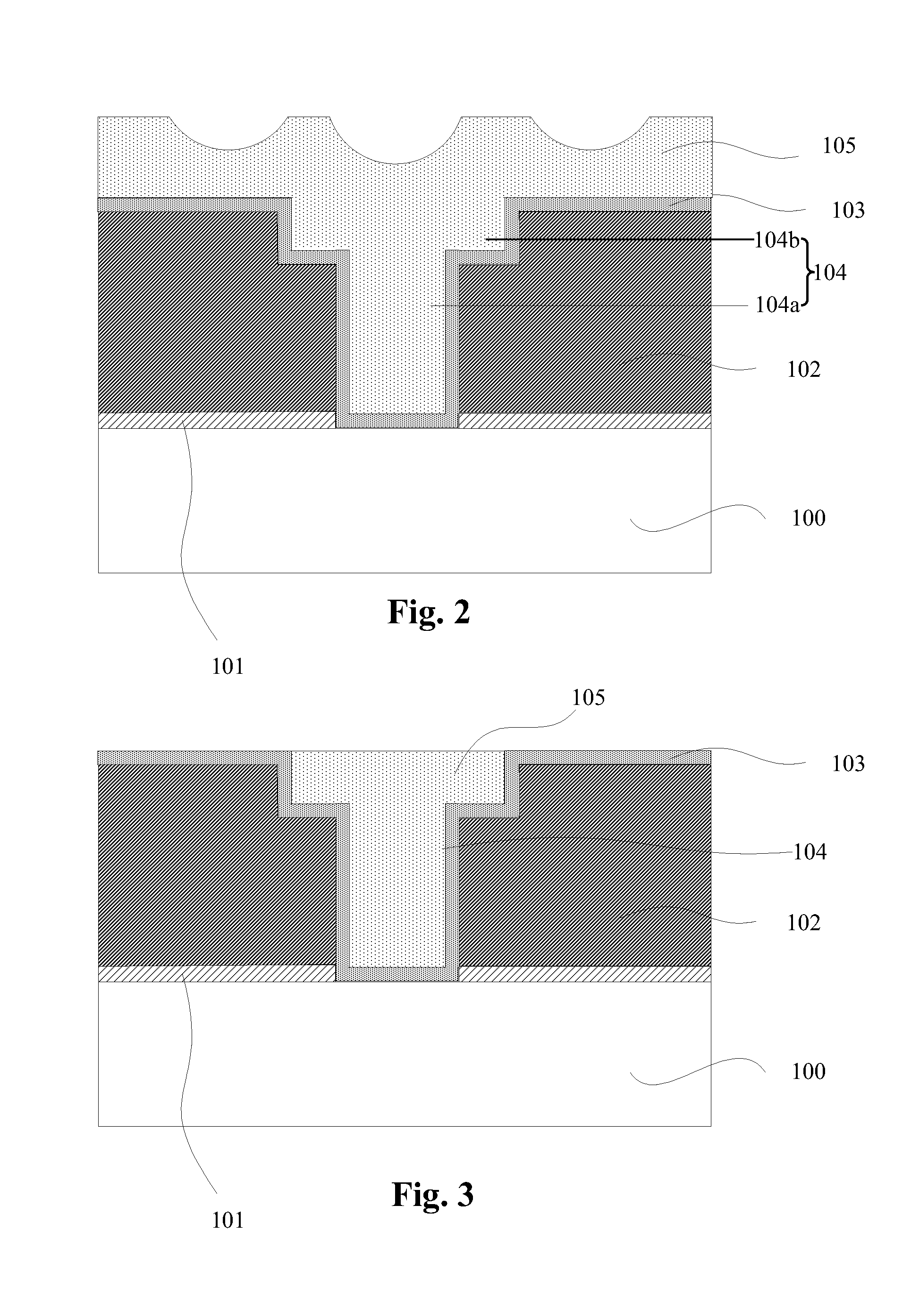Chemical mechanical polishing method
- Summary
- Abstract
- Description
- Claims
- Application Information
AI Technical Summary
Benefits of technology
Problems solved by technology
Method used
Image
Examples
Embodiment Construction
[0029]A conventional CMP process uses a surfactant to remove organic residues remaining on a surface of a substrate or wafer. However, a large amount of residues is remaining on the surface of the substrate or wafer after cleaning the surface using a surfactant. As known to one of ordinary skill in the art, a surfactant is a type of stable bipolar micelle with both hydrophilic and hydrophobic properties, which may be arranged according to certain orientation on a solution surface and significantly reduce a surface tension thereof. Specifically, the organic residues are made of hydrophobic materials, such as copper inhibitors, BTA, and the like, most of which are water-insoluble. Therefore, when the surfactant contacts with the organic residues, because of a presence of the hydrophobic micelle, a repulsive force is much larger than an attraction force between the surfactant and the water molecules. Therefore, the surfactant molecules assemble on surfaces of the organic residues accor...
PUM
 Login to View More
Login to View More Abstract
Description
Claims
Application Information
 Login to View More
Login to View More - R&D
- Intellectual Property
- Life Sciences
- Materials
- Tech Scout
- Unparalleled Data Quality
- Higher Quality Content
- 60% Fewer Hallucinations
Browse by: Latest US Patents, China's latest patents, Technical Efficacy Thesaurus, Application Domain, Technology Topic, Popular Technical Reports.
© 2025 PatSnap. All rights reserved.Legal|Privacy policy|Modern Slavery Act Transparency Statement|Sitemap|About US| Contact US: help@patsnap.com



